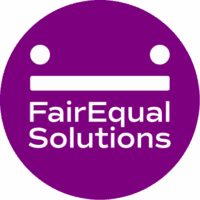Salary transparency is not an Excel topic – it is a reflection of the lived corporate culture and a strategic lever for fairness and trust.
What does salary transparency mean?
The new EU Salary Transparency Directive, which must be incorporated into local law by June 7, 2026, obliges companies, among other things, to disclose average or median salaries for the same or equivalent jobs, to announce salary ranges, and to clarify criteria for remuneration and promotion with the aim of ensuring equal pay for the same or equivalent activities – regardless of gender, origin, or working time model.
A culture stress test for companies
Implementation is far more than a legal project. It's a cultural shift. Pay transparency touches on central questions of corporate identity: How is performance evaluated? What values do we live by? And how do we deal with inequalities?
For many organizations, implementing the directive marks the beginning of a profound transformation. What at first glance appears to be a bureaucratic project turns out, upon closer inspection, to be a full-blown cultural stress test. True transparency means far more than disclosing salary figures – it challenges companies to honestly examine their compensation culture.
Corporate culture as the key to fair compensation
In a nutshell: “Transparency is more than disclosing salaries – it is a reflection of the corporate culture and its blind spots.” Companies must ask themselves:
- Which jobs are equivalent?
- Are the previous jobs evaluated according to objective and gender-neutral criteria?
- Are there transparent salary ranges for each job level?
- Are there cross-departmental standards for promotions and performance reviews? …
These questions and many more concern not only those responsible for people and culture, but all levels of management. Because fair compensation is not an isolated HR issue – it is an expression of appreciation, belonging, and fairness.
More than the gender pay gap: Focusing on diversity
While the directive focuses on the gender pay gap, it affects far more than just that: part-time workers, older employees, people with a migrant background, and those with care responsibilities. Establishing fair salary structures requires considering all dimensions of diversity and inclusion.
Implementation is complex and resource-intensive. It involves not just collecting and evaluating data, but also the in-depth analysis and redesign of role architectures, evaluation logic, compensation processes, and all the processes within the corporate culture that contribute to salary expectations: feedback and performance discussions; promotion practices; working time models, etc.
This means that compensation systems and compensation cultures must be designed objectively, transparently, and gender-neutrally. The burden of proof will lie with companies in the future – and this fundamentally changes the culture of dialogue.
Communication as a success factor
Martina Ernst shows in White paper* Salary is an emotional topic. It affects self-esteem and trust in the organization. Therefore, a new language is needed around the topic of salary – one that creates clarity without hurting.
Salary transparency must be implemented not only objectively but also sensitively. Only those who are understood can trust be built.
A structured communication process is essential. From preparation and analysis to the implementation of the new salary guidelines – every phase requires clear messages, participation formats, and training. Managers must learn to argue objectively and comprehensibly. Employees need guidance and the feeling of being heard.
Conclusion: Inform AND involve, because employees want to understand how salaries are calculated, what criteria apply for promotions and how performance is evaluated.
- Communicate transparent criteria for salary development.
- Train managers to argue objectively.
- Actively involve employees – through dialogue formats, FAQs and roadmaps.
FairEqualPay as an attitude and competitive advantage
FairEqualPay stands for more than compliance. It's a stance that positions companies as fair employers. Martina Ernst emphasizes: "Transparency can be a competitive advantage that shouldn't be underestimated. Companies that practice fair compensation gain trust – and talent."
Offering clear salary principles avoids demotivation caused by opaque differences and strengthens identification with the company. This promotes engagement, reduces turnover, and makes organizations sustainable.
Risks? Yes. But the opportunities outweigh them.
Of course, transparency can be costly in the short term—for example, if salaries need to be adjusted or new employees earn more than long-term colleagues. Disclosing realistic salary ranges in job advertisements can also lead to increased costs. But those who only focus on the risks miss the real opportunity:
Salary transparency is a strategic investment in trust, fairness and sustainability.
Conclusion: Culture beats compliance
The EU Pay Transparency Directive is a wake-up call. It calls on companies to examine their pay culture—and the values they truly live by. Those who boldly embrace change will not only achieve legal compliance, but also genuine fairness.
FairEqualPay represents a new form of remuneration:
- Transparent.
- Appreciative.
- Future-oriented.
Because in the end, it’s not just about numbers – it’s about people.





